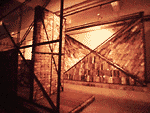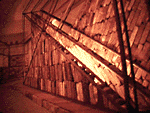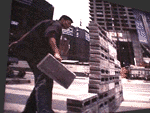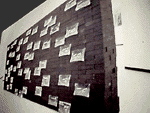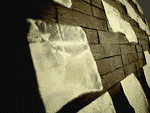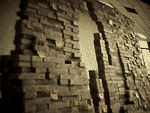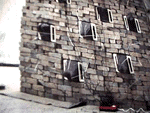|
LIN YILIN On the climb to the top floor of a nine story walk-up, Lin explains that he lives on a mountain peak. His apartment is well appointed, with a balcony and a view. He denies that he is middle class. Aside from the apartment fixtures, he has few possessions. The apartment belongs to his employer, an interior design company, but he expects to buy it soon. Until recently all dwellings were owned by companies and leased to employees at a nominal rent. Trouble with the boss meant loss of salary and home. One estimate claims over fifty percent of homes have been bought by the people living in them. This is a giant step in unleashing China's labor force. Millions of apartments are being sold yearly, maybe monthly, truly an amazing social transformation. |
|
